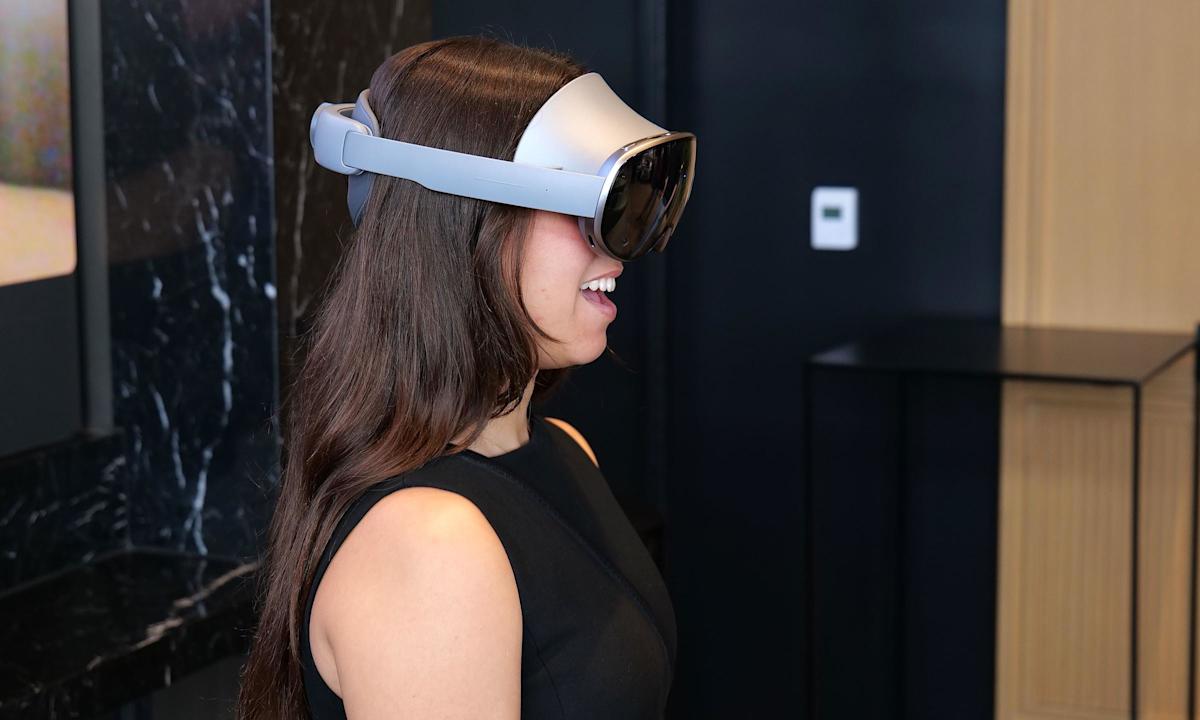So Samsung made a “Vision Pro Lite.” That was my immediate takeaway after this week’s debut of the Galaxy XR, the first Android XR device to hit the market. While Samsung deserves credit for offering something close to the Vision Pro for nearly half the price, an $1,800 headset still won’t get mainstream consumers rushing out the door to experience the wonders of mixed reality. And with the limited amount of content in Android XR at the moment, the Galaxy XR is in the same position as the Vision Pro: It’s just a well-polished developer kit.
The only logical reason to buy a Galaxy XR would be to test out apps for Android XR. If you just want to experience VR and dabble in a bit of augmented reality, you’re better off spending that money on a gaming laptop and the excellent $500 Meta Quest 3. (The Meta Quest Pro, the company’s first high-end mixed reality device, was unceremoniously killed after launching at an eye-watering $1,500.)
But even for developers, the Galaxy XR feels like it’s lacking, well, vision. Samsung has done an admirable job of copying almost every aspect of the Vision Pro: The sleek ski goggle design, dual micro-OLED displays and hand gesture interaction powered by a slew of cameras and sensors. But while Apple positioned the Vision Pro as its first stab at spatial computing, an exciting new platform where we can use interactive apps in virtual space, Samsung and Google are basically just gunning to put Android on your face.
There aren’t many custom-built XR apps, aside from Google’s offerings like Maps and Photos. (Something that also reminds me of the dearth of real tablet apps on Android.) And the ability to view 360-degree videos on YouTube has been a staple of every VR headset for the last decade — it’s not exactly notable on something that costs $1,800. Samsung and Google also haven’t said much about how they plan to elevate XR content. At least Apple is attempting to push the industry forward with its 8K Immersive Videos, which look sharper and more realistic than low-res 360-degree content.
For the most part, it seems as if Google is treating Android XR as another way to force its Gemini AI on users. In its press release for the Galaxy XR, Samsung notes that it’s “introducing a new category of AI-native devices designed to deliver immersive experiences in a form factor optimized for multimodal AI.”
…What?
In addition to being a crime against the English language, what the company is actually pitching is fairly simple: It’s just launching a headset that can access AI features via camera and voice inputs.
Who knows, maybe Gemini will make Android XR devices more capable down the line. But at the moment, all I’m seeing in the Galaxy XR is another Samsung device that’s shamelessly aping Apple, from the virtual avatars to specific pinch gestures. And Google’s history in VR and interactive content doesn’t inspire much hope about Android XR. Don’t forget how it completely abandoned Google Cardboard, the short-lived Daydream project and its hyped up Stadia cloud service. Stadia’s death was particularly galling, since Google initially pitched it as a way to revolutionize the very world of gaming, only to let it fall on its face.
There’s no doubt that Samsung, Apple and Meta have a ton of work left ahead in the world of XR. Samsung is at least closer to delivering something under $1,000, and Meta also recently launched the $800 Ray-Ban Display. But price is only one part of the problem. Purpose is another issue entirely. After living with the Vision Pro since its debut, I can tell that Apple is at least thinking a bit more deeply about what it’s like to wear a computer on your face. Just look at the upgrades its made around ultra-wide Mac mirroring, or the way Spatial Personas make it feel as if you’re working alongside other people. With Android XR, Google seems to just be making a more open Vision Pro.
Honestly, it’s unclear if normal users will ever want to use any sort of XR headset regularly, no matter how cheap they get. The experience making these headsets could help Google, Apple and Meta develop future AR glasses, or eyewear that offer some sort of XR experience (Samsung already has something in the works with Warby Parker and Gentle Monster). But while Apple and Meta have broken new ground in XR, Google and Samsung just seem to be following in their footsteps.
First Appeared on
Source link












